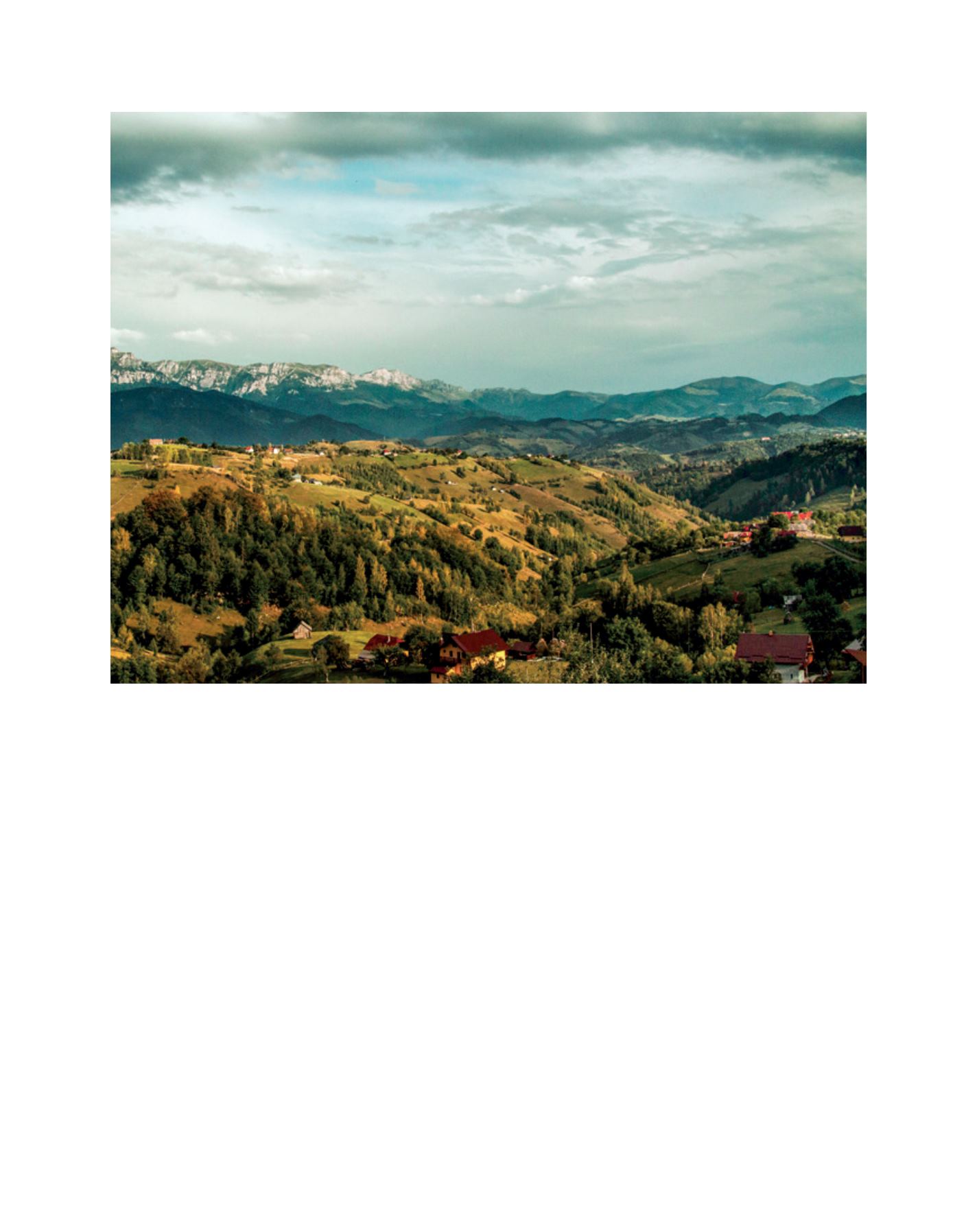

[
] 155
Image: Ministry of Agriculture and Rural Development of Romania
The beauty of Romanian rural landscape, where the land is rich in resources for agriculture
farm agriculture system not only enables better environmental
and sustainable agroproduction, it also helps to solve severe
social issues.
When food is processed in the production area with smaller
food processing systems and products are transported for
shorter distances, they offer fresher products to the final
consumer, compared to the industrial food chain that offers
mostly processed food and intensive agricultural practices and
uses large quantities of energy and fuel throughout the trans-
port, storage, packing and freezing process. There is increased
interest in society in eating better, healthier local food. Family
farms are the ones able to fulfil this demand.
Statistics show that, if in the 1990s the migration was from
villages to cities, nowadays, past the economic crisis, more
people are turning their faces towards sustainable living in the
countryside. As we know, family farming is the most common
operational farming model in Europe and thus of great impor-
tance in the EU. Romania now has hundreds of thousands of
families who want to live well in the countryside, ready to
fight the poverty flagella, ready to bring back to life lost tradi-
tions, crafts and knowledge.
Romania’s rural area is an asset that has recently been
brought back to attention. The landscape is beautiful, the
land is rich in resources for agriculture and the remote
villages have kept their local vibe in a way that is attract-
ing more and more visitors. Large-scale tourism, most of
the time, damages the environment and produces huge
amounts of food waste, another main focus of attention
this year. Rural tourism is sustainable, helps people gain
an extra income, keeps traditions alive and does not waste
food, especially because it uses food produced locally, with
home-style cooking practices.
In Romania agriculture employs most rural inhabitants,
and most farms are under five hectares. There are 3.9 million
farm holdings in Romania, the majority of which are family
farms of extensive semi-natural grassland pastoral systems
and mixed farming systems. These semi-natural small-scale
farmed landscapes are of significant economic importance.
For example, the 1 million holdings between 1 and 10
hectares (3.1 million hectares, 20 per cent of Romania’s
agricultural area) are classified as semi-subsistence farms
producing for home consumption, local sales and for their
extended families. Yet these farms are estimated to produce
25-30 per cent of national food consumption. They also
provide rural vitality, compared to the largest farms which
are associated with rural poverty.
D
eep
R
oots
















